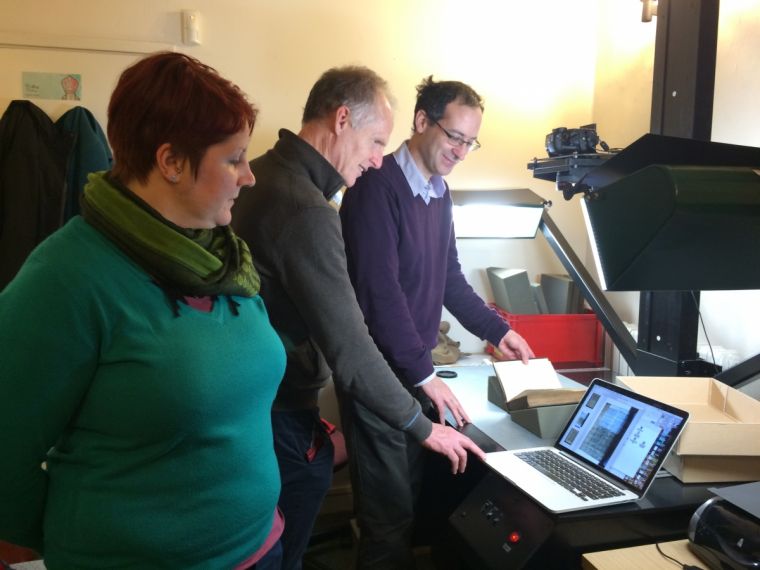Hidden notes in rare Christian Bible show subversive use of Latin

For centuries, the Reformation has been regarded as a "clean break" of the Protestant Church of England with Rome.
Secret texts discovered in a rare Bible at the London home of the Archbishop of Canterbury reveal that it took far longer and was a more complex process than many imagine.
Using the latest scientific techniques, researchers have found notes that had remained hidden for nearly 500 years between the pages of England's oldest printed Bible.
The Bible, published in 1535 by Henry VIII's printer, is one of just seven surviving copies and is housed in Lambeth Palace Library, London.
Dr Eyal Poleg, a historian from Queen Mary University of London, said: "We know virtually nothing about this unique Bible, whose preface was written by Henry himself, outside of the surviving copies.
"At first, the Lambeth copy appeared completely 'clean'. But upon closer inspection I noticed that heavy paper had been pasted over blank parts of the book. The challenge was how to uncover the annotations without damaging the book."
The Bible was X-rayed using the latest 3D density techniques, allowing researchers to see the pages with and without the annotations, and then showing only the annotations.
The notes were written between 1539 and 1549 and covered with thick paper. They are apparently there to point readers to Latin texts of Bible readings to use in services, indicating one way parishes were attempting to get around King Henry VIII's ban on Latin in the liturgy.
Poleg said: "Until recently, it was widely assumed that the Reformation caused a complete break, a Rubicon moment when people stopped being Catholics and accepted Protestantism, rejected saints, and replaced Latin with English. This Bible is a unique witness to a time when the conservative Latin and the reformist English were used together, showing that the Reformation was a slow, complex, and gradual process."
The annotations were written during the most tumultuous years of Henry's reign when the English Church moved away from Rome, the Act of Supremacy was passed, along with the suppression of the monasteries and the executions of Anne Boleyn, Thomas More and John Fisher, as well as the Pilgrimage of Grace.

Dr Poleg was also able to trace the subsequent life of the book, after Latin Bibles had been completely superseded. On the back page he found a hidden, handwritten transaction between two men, William Cheffyn of Calais and James Elys Cutpurse of London.
Cutpurse, in medieval English jargon, meant pickpocket.
The transaction states that Cutpurse promised to pay 20 shillings to Cheffyn, or would go to Marshalsea, a notorious prison in Southwark.
Dr Poleg found that Cutpurse was indeed hanged in Tybourn in July 1552.
Dr Poleg said: "Beyond Mr Cutpurse's illustrious occupation, the fact that we know when he died is significant. It allows us to date and trace the journey of the book with remarkable accuracy – the transaction obviously couldn't have taken place after his death.

"The book is a unique witness to the course of Henry's Reformation. Printed in 1535 by the King's printer and with Henry's preface, within a few short years the situation had shifted dramatically. The Latin Bible was altered to accommodate reformist English, and the book became a testimony to the greyscale between English and Latin in that murky period between 1539 and 1549.
"Just three years later things were more certain. Monastic libraries were dissolved, and Latin liturgy was irrelevant. Our Bible found its way to lay hands, completing a remarkably swift descent in prominence from Royal text to recorder of thievery."











